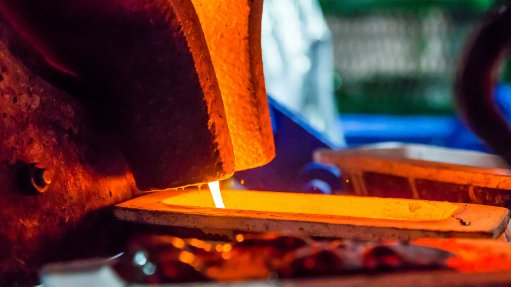
While the global gold industry is broadly on track to align with a 2 °C climate target by the end of the current decade, more action is needed if the industry is to meet, and surpass, the 1.5 °C mark.
This is according to a new report from Wood Mackenzie, which plots the forecast progress of gold miners out to 2030 against the reduction in emissions required to align with the 2 °C and 1.5 °C targets of the Paris Agreement.
To date, the cleaner energy projects that have been implemented and planned will result in savings of more than three-million tonnes a year of carbon dioxide- (CO2-) equivalent, which is 5.5% of the gold industry’s total 2019 emissions.
Wood Mackenzie points out that although the gold industry’s emissions of about 55-million tonnes of CO2-equivalent in 2019 in Scope 1 and Scope 2 emissions are small in comparison to other areas within the energy sector, the industry must not become complacent.
“The gold industry cannot afford to rest on their laurels. The focus on the ‘E’ in ESG has never been greater and with COP26 taking place later this year, we expect the spotlight on sustainability to intensify,” says Wood Mackenzie head of gold research Rory Townsend.
He warns that miners that are not striving to reduce their environmental footprints are likely to lose favour among investors and struggle to secure project financing.
“Proof that this is not a box-ticking exercise is evidenced by several miners executing sustainability-linked credit facilities, such as those agreed by Newmont in March and Polymetal increasing theirs in May.”
The location of gold assets in operation is expected to be an important determining factor in reducing emissions, with several carbon-intensive mines due to go off line before 2030. However, in the past 12 months, mine life extensions are materialising alongside the elevated gold price at companies such as Equinox, Alamos and Yamana. Ultimately, if mine life extensions continue, Wood Mackenzie says the industry may need to see even more aggressive action to reduce emissions to align with carbon reduction targets.
“It is apparent that some mines have a lot more ground to cover than others. Those that are beholden to carbon-intensive grids could struggle unless the process to approve on-site renewable alternatives accelerates markedly,” adds Townsend.
While cleaner energy projects are coming thick and fast, the bulk of progress so far has come from 15 companies, he says, stressing that it will be a collective effort to change perceptions of the industry.
“This is an opportunity for miners to boost their green credentials, particularly at a time when other asset classes, such as cryptocurrency, are having their sustainability commitments drawn into question.”